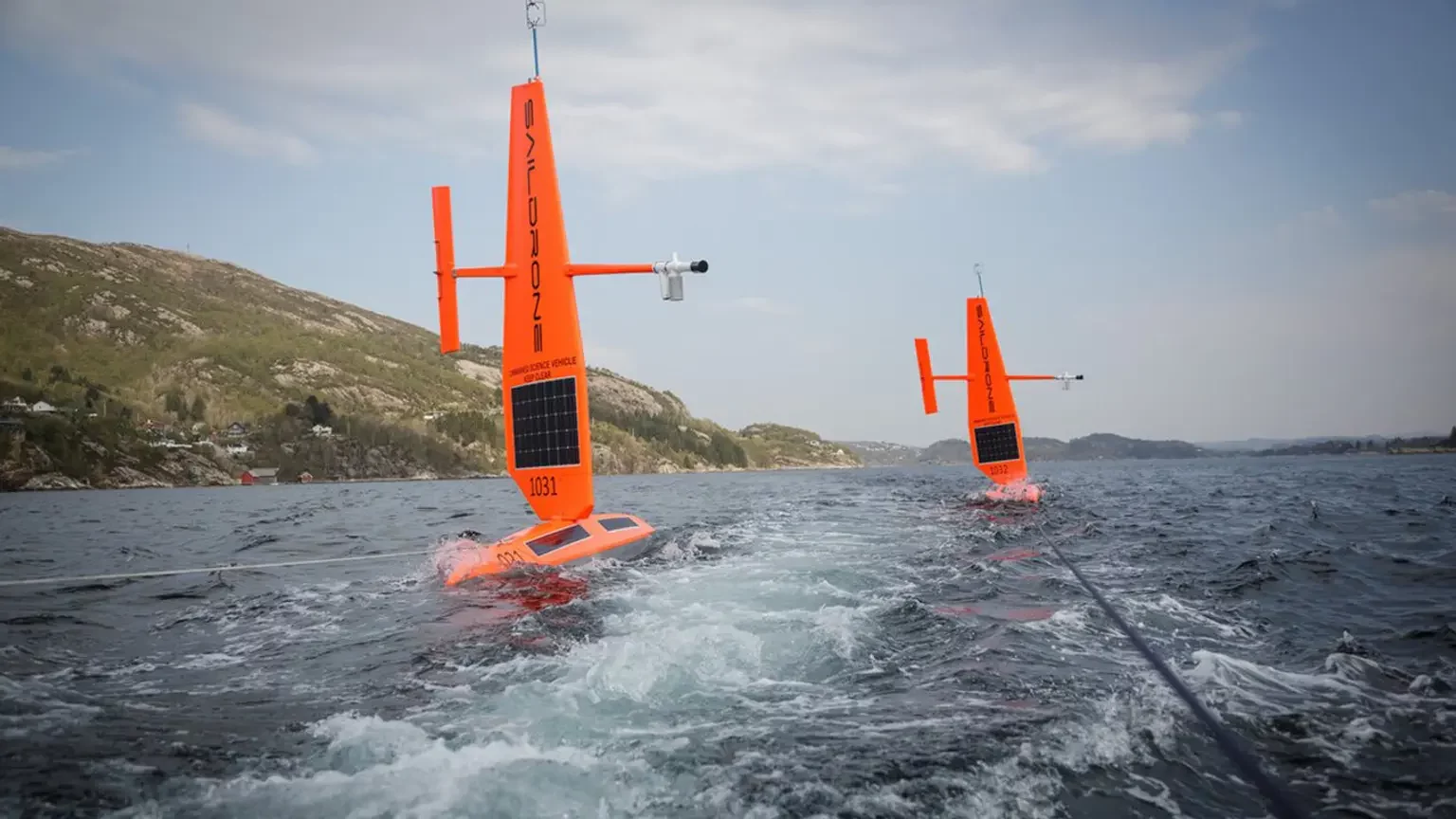Research drones cruising the North Sea
The Institute of Marine Research (IMR) has launched a pilot project to collect data on herring, sand lance, saithe, fish larvae and plankton in the North Sea. The project uses a wind-powered sailing drone from the US startup Saildrone. Saildrone, meanwhile, is taking the opportunity to test a second drone in the North Sea at the same time.
After being calibrated at the Port of Bergen, the two drones have been towed out to sea and are now following a predefined course in the North Sea.
Orange but green
The bright orange drones measure 7 x 5 metres and weigh 750 kg. Powered by the wind, they are quiet and can travel at speeds of up to 8 knots. The integrated echo sounders and sensors, meanwhile, are solar powered, resulting in emission-free and noiseless data collection.
To avoid accidents, the drones can be detected on radar by other vessels and are programmed to give way. “But,” says the drone’s inventor Richard Jenkins, “the oceans are vast, so that’s very rarely necessary.”
Same echo sounders as research vessels
Although the project is still in its infancy, marine scientist and project manager Espen Johnsen is unequivocal: “This is definitely one of the monitoring tools we will use in the future,” he says.
He explains that the sailing drone will collect data at the same time as the IMR conducts two traditional surveys in the same waters using research vessels.
“It will be interesting to compare the survey data with those collected by the drone. One of the advantages is that the echo sounders on the drone are exactly the same as the ones on our research vessels. That means we can make use of the data without having to develop new methods of analysis,” he says.
Effective and environment-friendly data collection
Johnsen can see the IMR rapidly adopting this method of data collection, as the drones have many advantages. They are environment-friendly, can cover larger and shallower areas than research vessels, and could potentially collect data on a continuous basis.
“The sailing drone makes hardly any noise and it can get closer to fish than bigger vessels. In addition, it is easy to redirect the drone if it makes any interesting observations. Combining the drones with other high-tech tools, like machine learning, for example, can make them even more useful to us,” he says.
The original version of this article was published on the IMR website on 29 April 2019. Authors: Marie Hauge and Erlend A. Lorentzen.
For more information, please contact Espen Johnsen.
Source Business Norway



